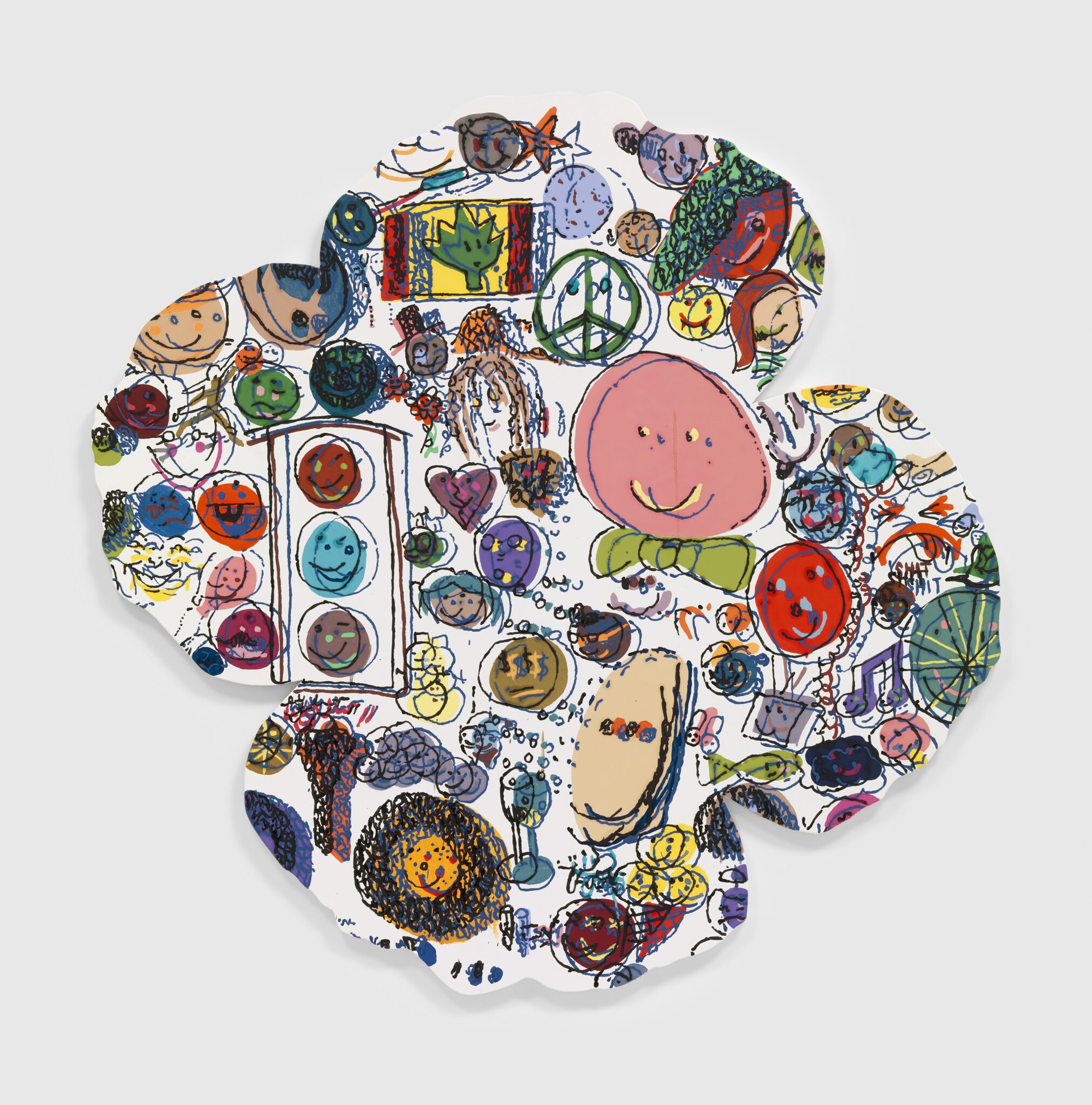The smiley faces have their beginning in this letter O.J. Simpson wrote when he first got into trouble for the whole Nicole Brown Simpson debacle. He wrote it to his fans as something of a suicide note and signed it “Peace and love, O.J.” And the “O” in O.J. has this smiley face in it, and you just know from looking at it how fucking crazy this person is for signing it that way. A lot of people use a smiley face when they write letters. But it’s this huge insane compulsion, like “I’m happy! I swear!” I’m not buying it. I don’t believe them. Four years ago I made a work based off the O.J. letter, and now I’m making a whole series of them. – Nate Lowman
Countless smiley faces cover the flower-shaped canvas of Nate Lowman’s Smile Poppy. The hand-scrawled icon appears in one of Lowman’s most well-known bodies of work, where the artist alters smiley faces giving them individuality by adding hair styles, costumes, cat ears, or by transforming them into traffic lights or pizza. The arrangement seen here is a variation on a set composition from years ago, with Lowman revisiting this motif and incorporating overlapping lines and jagged edges that suggest a bad print reproduction instead of a detailed, painted replication. Since the early 2000s, Lowman has been widely acclaimed for his pop art infused works that draw imagery from the news, art history, or pop culture. “I’m just reopening them to get at their second, third, or fourth meanings,” says Lowman. “It really comes down to language. I feel like the biggest failure of humans is miscommunication. We can’t communicate with each other – we can fight, we can kill, we can do those things well. Language is the most beautiful and destructive thing because it allows you to express yourself, but it totally confuses everything.” Born in Las Vegas, Lowman lives in New York City. His work is in numerous collections worldwide, and he has been exhibited at the Museum of Modern Art, New York; the Solomon R. Guggenheim Museum, New York; the Centre Pompidou, Paris; the Whitney Museum of American Art, New York; Palais de Tokyo, Paris; and Palazzo Grassi, Venice; and the Dallas Contemporary.

